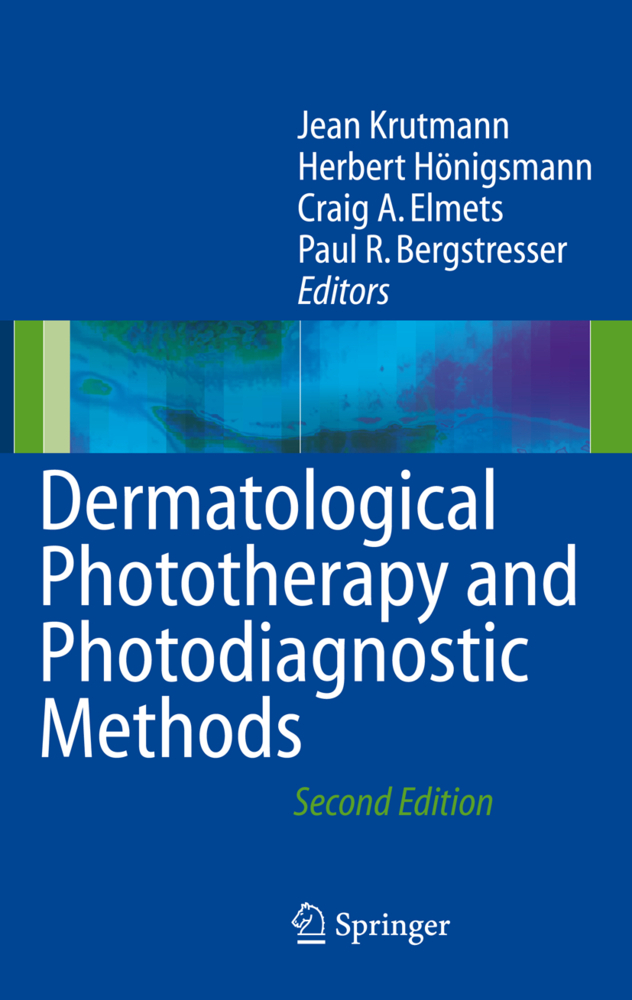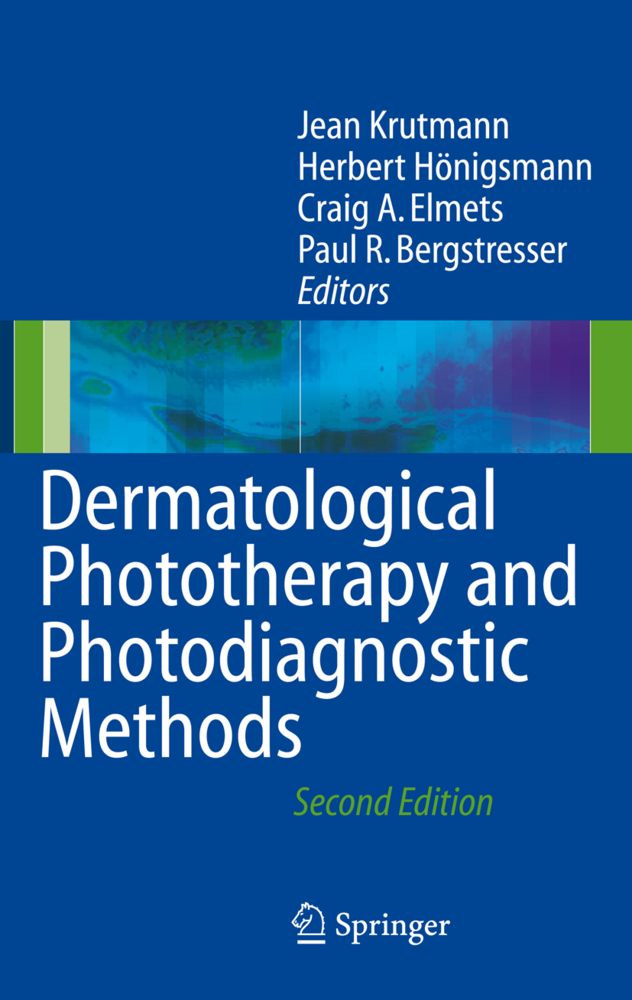Vitiligo
Vitiligo
Vitiligo has been, until recently, a rather neglected area in dermatology and medicine. Patients complain about this situation, which has offered avenues to quacks, and has led to the near orphan status of the disease. The apparently, simple and poorly symptomatic presentation of the disease has been a strong disadvantage to its study, as compared to other common chronic skin disorders such as psoriasis and atopic dermatitis. Vitiligo is still considered by doctors as a non disease, a simple aesthetic problem. A good skin-based angle of attack is also lacking because generalized vi- ligo is clearly epitomizing the view of skin diseases as simple targets of a systemic unknown dysregulation (diathesis), re? ecting the Hippocratic doctrine. This view has mostly restricted vitiligo to the manifestation of an auto-immune diathesis in the past 30 years. Thus, skin events, which are easily detected using skin biospies in most other situations, have not been precisely recorded, with the argument that a clinical diagnosis was suf? cient for the management (or most commonly absence of mana- ment) of the patient. This book is an international effort to summarize the information gathered about this disorder at the clinical, pathophysiological and therapeutic levels. Its primary aim is to bridge current knowledge at the clinical and investigative level, to point to the many unsolved issues, and to delineate future priorities for research.
Epidemiology, Definitions and Classification
Histopathology
Generalized Vitiligo
Segmental Vitiligo
Vitiligo Universalis
Mucosal Vitiligo
Halo Nevi and Vitiligo
Hair Involvement in Vitiligo
Non-Skin Melanocytes in Vitiligo
Autoimmune/Inflammatory and Other Diseases Associated with Vitiligo
Vitiligo and Immunodeficiencies
Inflammatory Vitiligo
Rare Inherited Diseases and Vitiligo
Vitiligo in Childhood
Late-Onset Vitiligo
Evaluation, Assessment and Scoring
Quality of Life
Natural History and Prognosis
Defining the Disease: Editor's Synthesis
Understanding the Disease
Pathophysiology Overview
Genetics
Environmental Factors
In Vivo Data
Animal Models
In Vitro Approaches
Oxidative Stress
Immune/Inflammatory Aspects
Cytokines and Growth Factors
Proopiomelanocortin and Related Hormones
Other Hypotheses
Particular Clinical Characteristics of Segmental Vitiligo
The Concept of Mosaicism Applied to SV
The Neurogenic Hypothesis in Segmental Vitiligo
Segmental Vitiligo: A Model for Understanding the Recapitulation of Repigmentation
Editor's Synthesis
Therapy
Management Overview
Topical Corticosteroids
Calcineurin Inhibitors
Vitamin D Analogues
PUVA and Related Treatments
UVB Total Body and Targeted Phototherapies
Vitamins and Antioxidants: Topical and Systemic
Corticosteroid Minipulses
Other Immunosuppressive Regimen
Empirical, Traditional, and Alternative Treatments
Background and Techniques
The Outcomes: Lessons About Surgical Therapy for Vitiligo in the Past Two Decades
Combined Therapies for Vitiligo
Camouflage
Photoprotection Issues
Depigmenting Agents
Therapy Adapted for Age, Gender, and Specific Locations
Psychological Interventions
The Patient Perspective
Evidence-Based Medicine Perspective
Editor's Synthesis and Perspectives.
Defining the Disease
Historical AspectsEpidemiology, Definitions and Classification
Histopathology
Generalized Vitiligo
Segmental Vitiligo
Vitiligo Universalis
Mucosal Vitiligo
Halo Nevi and Vitiligo
Hair Involvement in Vitiligo
Non-Skin Melanocytes in Vitiligo
Autoimmune/Inflammatory and Other Diseases Associated with Vitiligo
Vitiligo and Immunodeficiencies
Inflammatory Vitiligo
Rare Inherited Diseases and Vitiligo
Vitiligo in Childhood
Late-Onset Vitiligo
Evaluation, Assessment and Scoring
Quality of Life
Natural History and Prognosis
Defining the Disease: Editor's Synthesis
Understanding the Disease
Pathophysiology Overview
Genetics
Environmental Factors
In Vivo Data
Animal Models
In Vitro Approaches
Oxidative Stress
Immune/Inflammatory Aspects
Cytokines and Growth Factors
Proopiomelanocortin and Related Hormones
Other Hypotheses
Particular Clinical Characteristics of Segmental Vitiligo
The Concept of Mosaicism Applied to SV
The Neurogenic Hypothesis in Segmental Vitiligo
Segmental Vitiligo: A Model for Understanding the Recapitulation of Repigmentation
Editor's Synthesis
Therapy
Management Overview
Topical Corticosteroids
Calcineurin Inhibitors
Vitamin D Analogues
PUVA and Related Treatments
UVB Total Body and Targeted Phototherapies
Vitamins and Antioxidants: Topical and Systemic
Corticosteroid Minipulses
Other Immunosuppressive Regimen
Empirical, Traditional, and Alternative Treatments
Background and Techniques
The Outcomes: Lessons About Surgical Therapy for Vitiligo in the Past Two Decades
Combined Therapies for Vitiligo
Camouflage
Photoprotection Issues
Depigmenting Agents
Therapy Adapted for Age, Gender, and Specific Locations
Psychological Interventions
The Patient Perspective
Evidence-Based Medicine Perspective
Editor's Synthesis and Perspectives.
| ISBN | 978-3-642-42274-4 |
|---|---|
| Artikelnummer | 9783642422744 |
| Medientyp | Buch |
| Copyrightjahr | 2014 |
| Verlag | Springer, Berlin |
| Umfang | XVII, 483 Seiten |
| Abbildungen | XVII, 483 p. |
| Sprache | Englisch |









